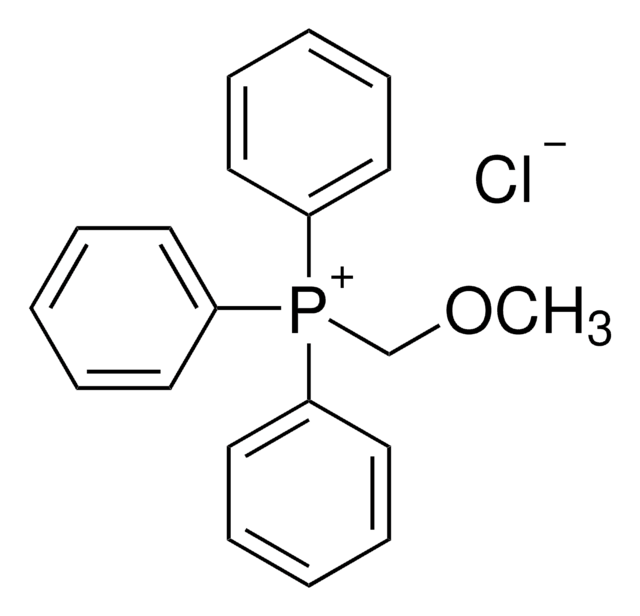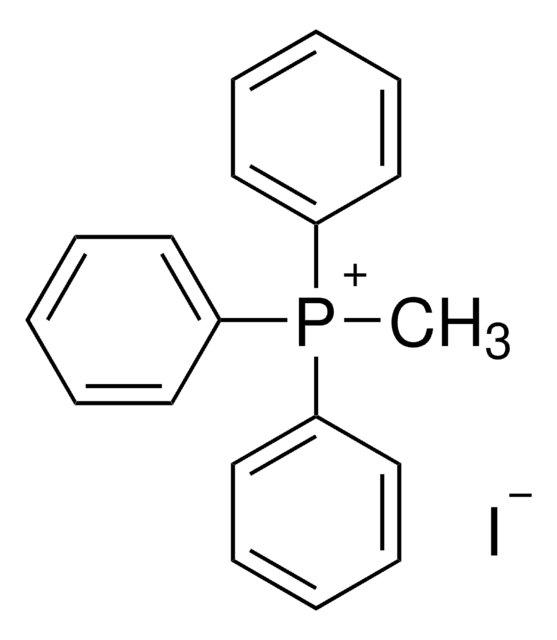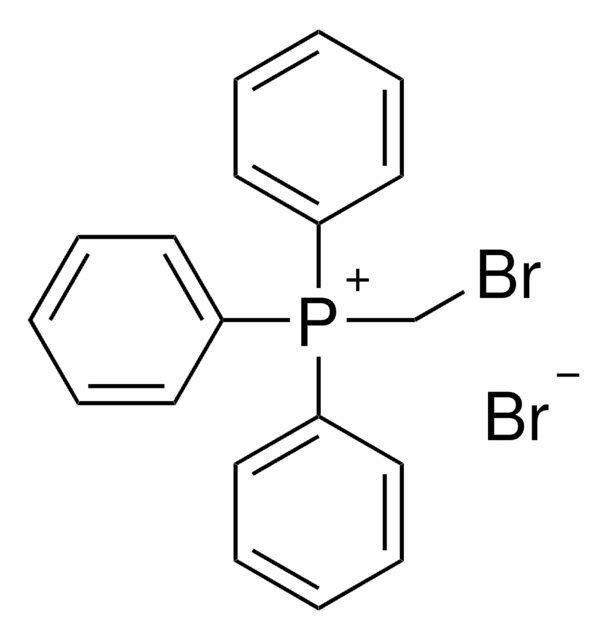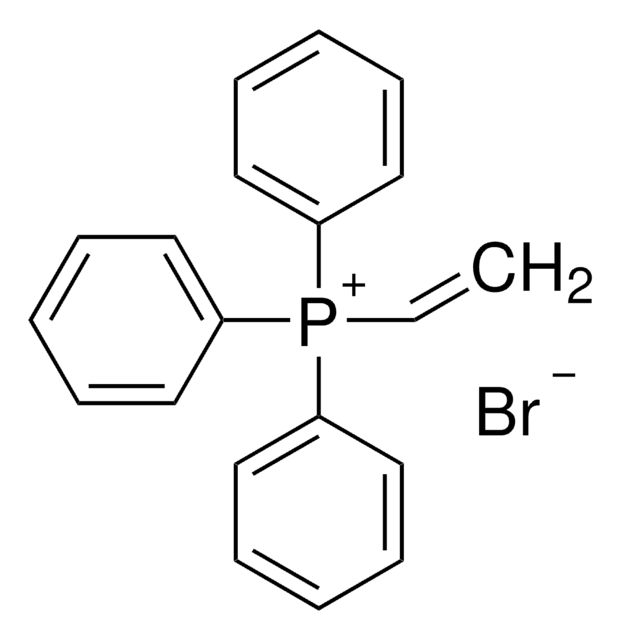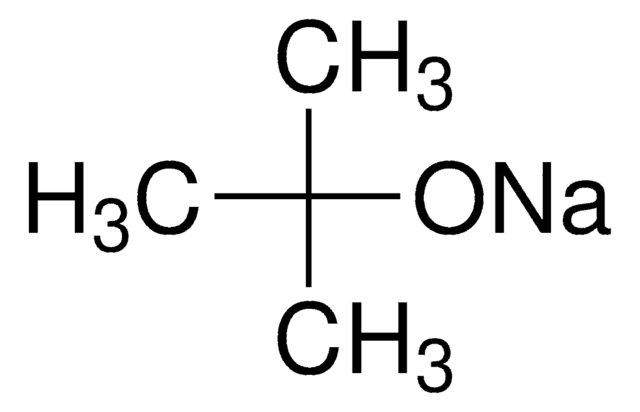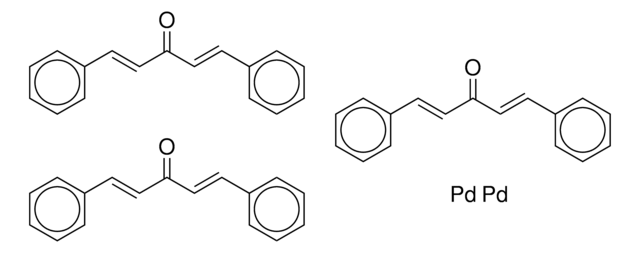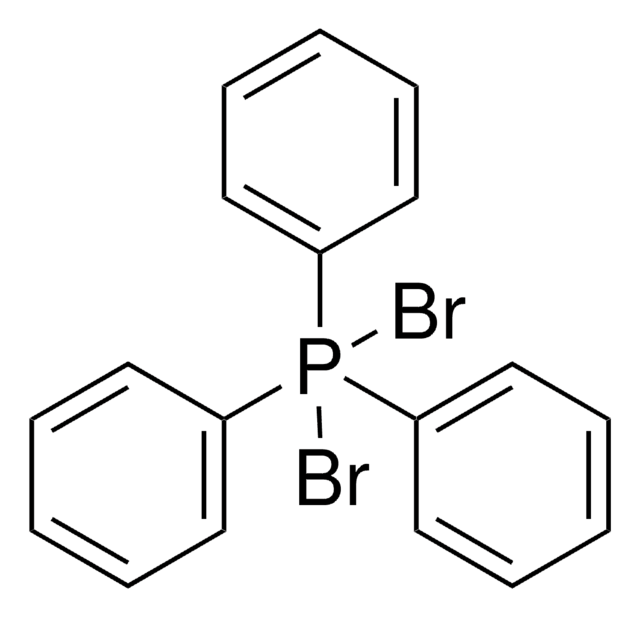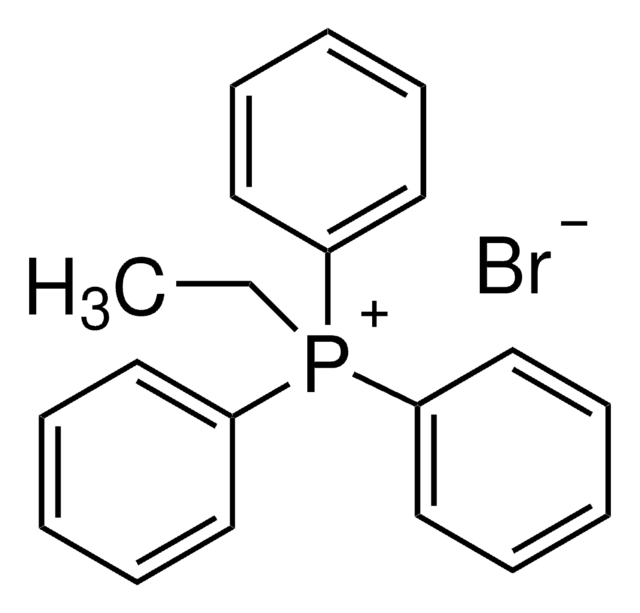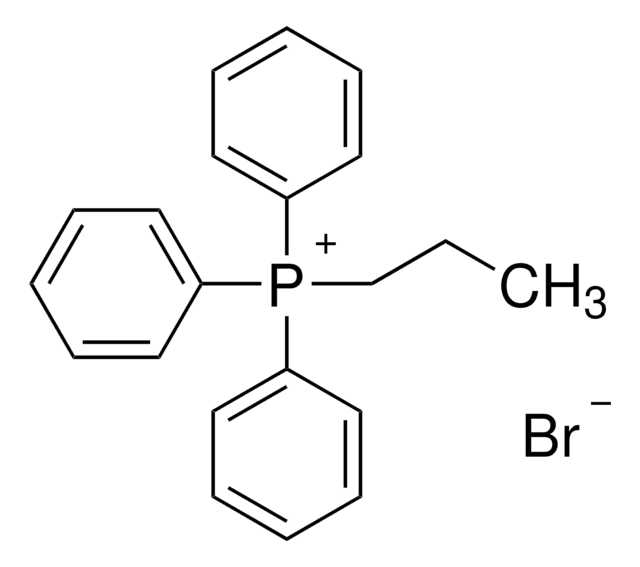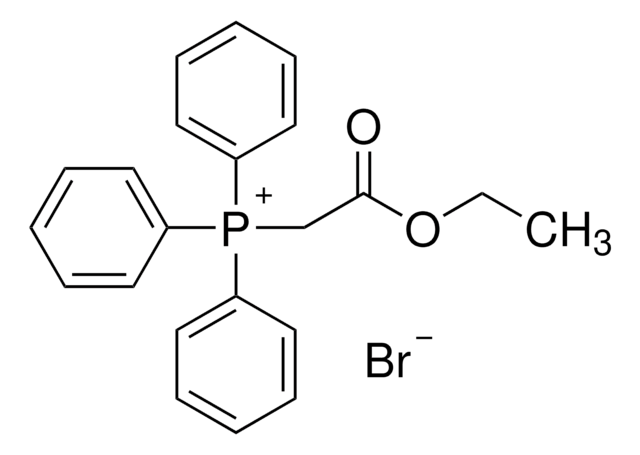130079
Methyltriphenylphosphonium bromide
98%
Synonyme(s) :
TPMP, Triphenylmethylphosphonium bromide, triphenylmethylphosphonium bromide
About This Item
Produits recommandés
Niveau de qualité
Essai
98%
Forme
powder
Capacité de réaction
reaction type: C-C Bond Formation
Pf
230-234 °C (lit.)
Groupe fonctionnel
phosphine
Chaîne SMILES
[Br-].C[P+](c1ccccc1)(c2ccccc2)c3ccccc3
InChI
1S/C19H18P.BrH/c1-20(17-11-5-2-6-12-17,18-13-7-3-8-14-18)19-15-9-4-10-16-19;/h2-16H,1H3;1H/q+1;/p-1
Clé InChI
LSEFCHWGJNHZNT-UHFFFAOYSA-M
Vous recherchez des produits similaires ? Visite Guide de comparaison des produits
Application
Mention d'avertissement
Danger
Mentions de danger
Conseils de prudence
Classification des risques
Acute Tox. 3 Oral - Aquatic Chronic 2
Code de la classe de stockage
6.1D - Non-combustible acute toxic Cat.3 / toxic hazardous materials or hazardous materials causing chronic effects
Classe de danger pour l'eau (WGK)
WGK 3
Point d'éclair (°F)
>464.0 °F
Point d'éclair (°C)
> 240 °C
Équipement de protection individuelle
dust mask type N95 (US), Eyeshields, Gloves
Faites votre choix parmi les versions les plus récentes :
Certificats d'analyse (COA)
Vous ne trouvez pas la bonne version ?
Si vous avez besoin d'une version particulière, vous pouvez rechercher un certificat spécifique par le numéro de lot.
Déjà en possession de ce produit ?
Retrouvez la documentation relative aux produits que vous avez récemment achetés dans la Bibliothèque de documents.
Les clients ont également consulté
Notre équipe de scientifiques dispose d'une expérience dans tous les secteurs de la recherche, notamment en sciences de la vie, science des matériaux, synthèse chimique, chromatographie, analyse et dans de nombreux autres domaines..
Contacter notre Service technique
